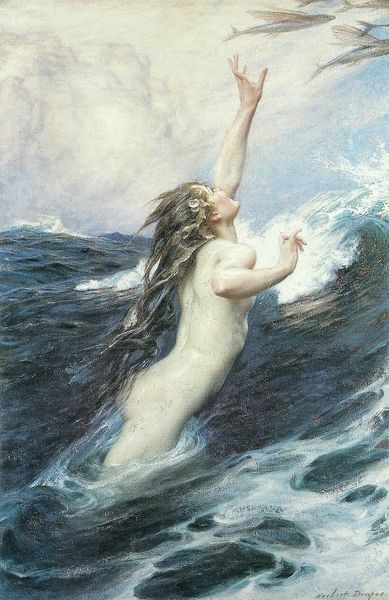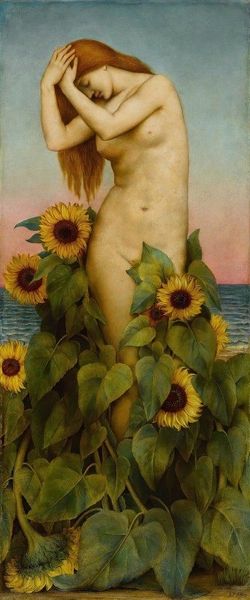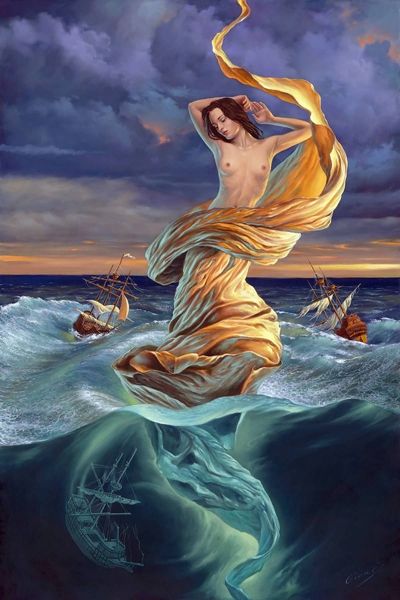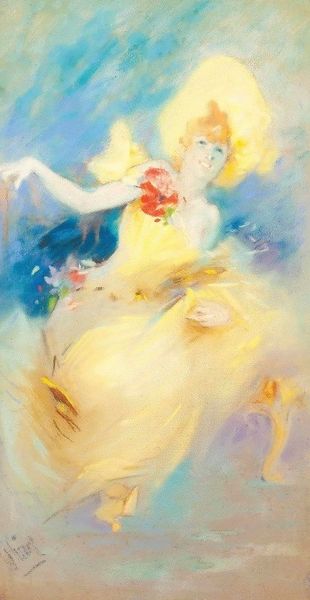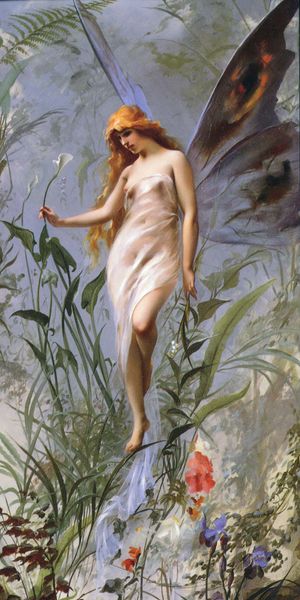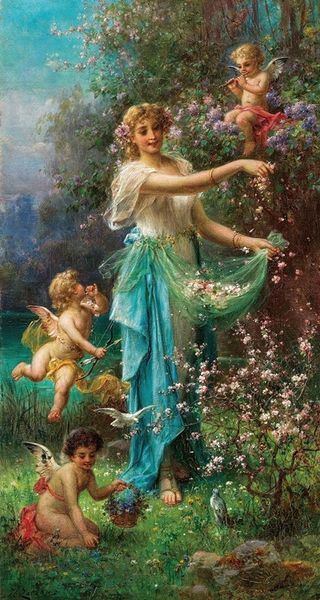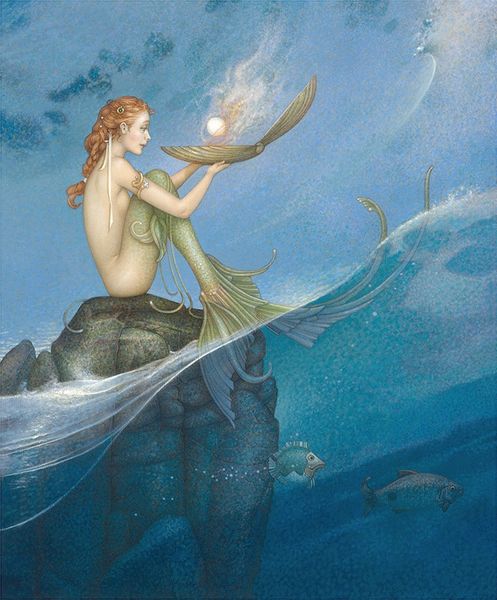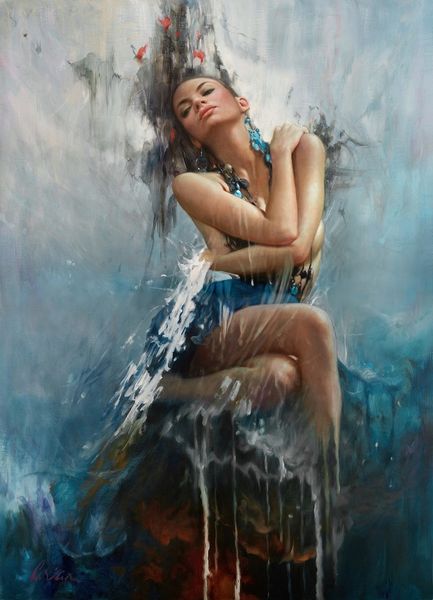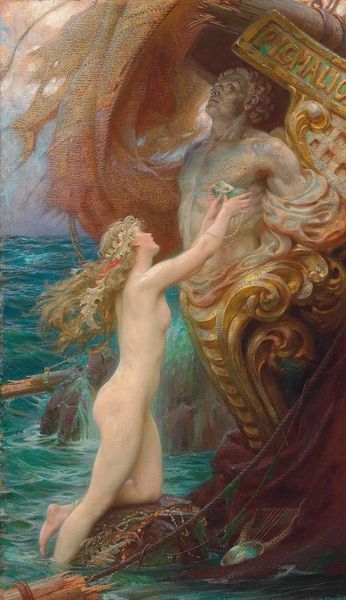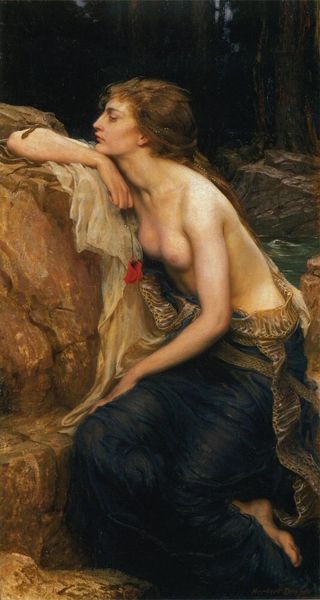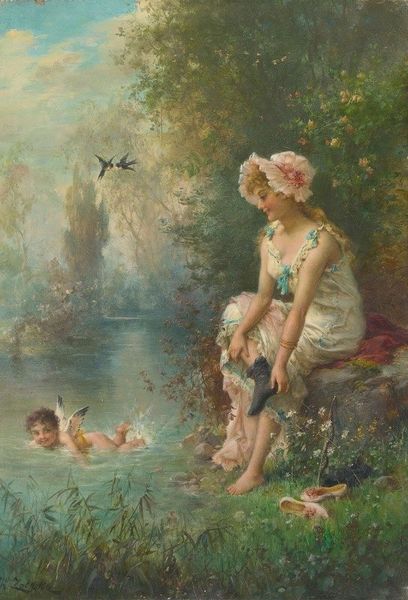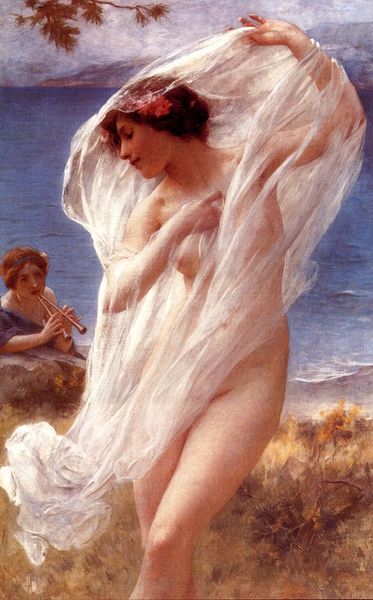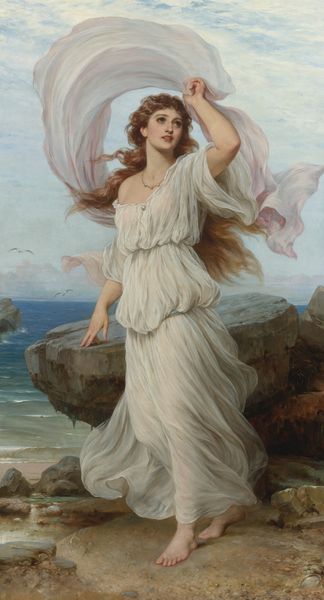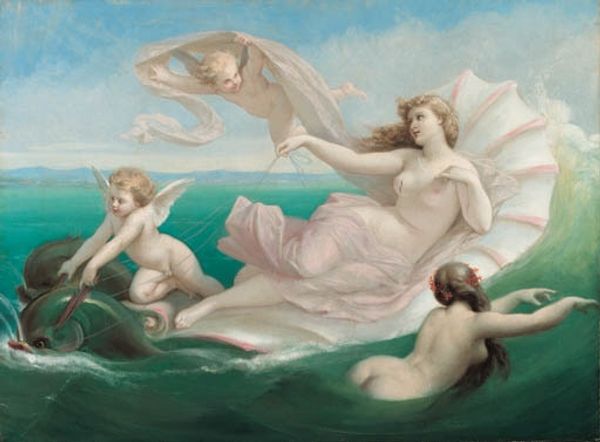
painting, oil-paint
#
allegory
#
painting
#
oil-paint
#
landscape
#
figuration
#
oil painting
#
romanticism
#
mythology
#
nude
Copyright: Public Domain: Artvee
Curator: This piece immediately feels liberating, a visual poem filled with airy light. Editor: That's a great way to put it. We're looking at "Water Nymph" by Hans Zatzka, though he sometimes went by other names. We don’t have a firm date for this oil painting, but it clearly fits into his larger body of work. Curator: Absolutely. The figure is classic Zatzka – ethereal and poised – but it is the broader themes that call out to me. Note the clear symbolism, where the nymph could represent transformation. The rising up from the depths... it speaks volumes about rebirth, about becoming. Editor: I wonder if that sense of rebirth wasn’t also tied to the audience viewing these kinds of paintings. Looking at Zatzka's context, he became popular during a period of rapid urbanization and industrial change. This piece offered an escape. How did it play into the existing institutions of art? Curator: He occupied a unique niche, almost skirting the edges. Mass production certainly gave him wider distribution, allowing these mythological archetypes to find their way into middle-class homes. Editor: Exactly! Think about it. Art salons and official academies emphasized specific historical and moral narratives. A piece like this, reproduced widely, democratized access to images that still borrowed from the visual language of established art. It creates a kind of friction that changes access. Curator: And isn't it that very accessibility, those readily understood visual cues, that continue to resonate with us? The use of familiar allegories acts almost as a shared language that moves beyond epochs. Editor: Perhaps that's also its limitation. The overt symbolism might be viewed now as bordering on cliché. Did it reinforce existing stereotypes around beauty or feminine ideals, making the subject of art an escape from reality rather than an engagement? Curator: It’s a fair point to consider how it perpetuates conventional standards of beauty but maybe that comfort— the adherence to that visual tradition—offered stability amidst that period’s societal shifts. The human desire to transcend. Editor: These paintings show how intertwined mythology, artistry, and the politics of beauty always seem to be, challenging the function and purpose of art itself in modern society. Curator: A crucial interplay to unravel. The symbolism offers something enduring and also reminds us of the world that brought the piece into being.
Comments
No comments
Be the first to comment and join the conversation on the ultimate creative platform.
